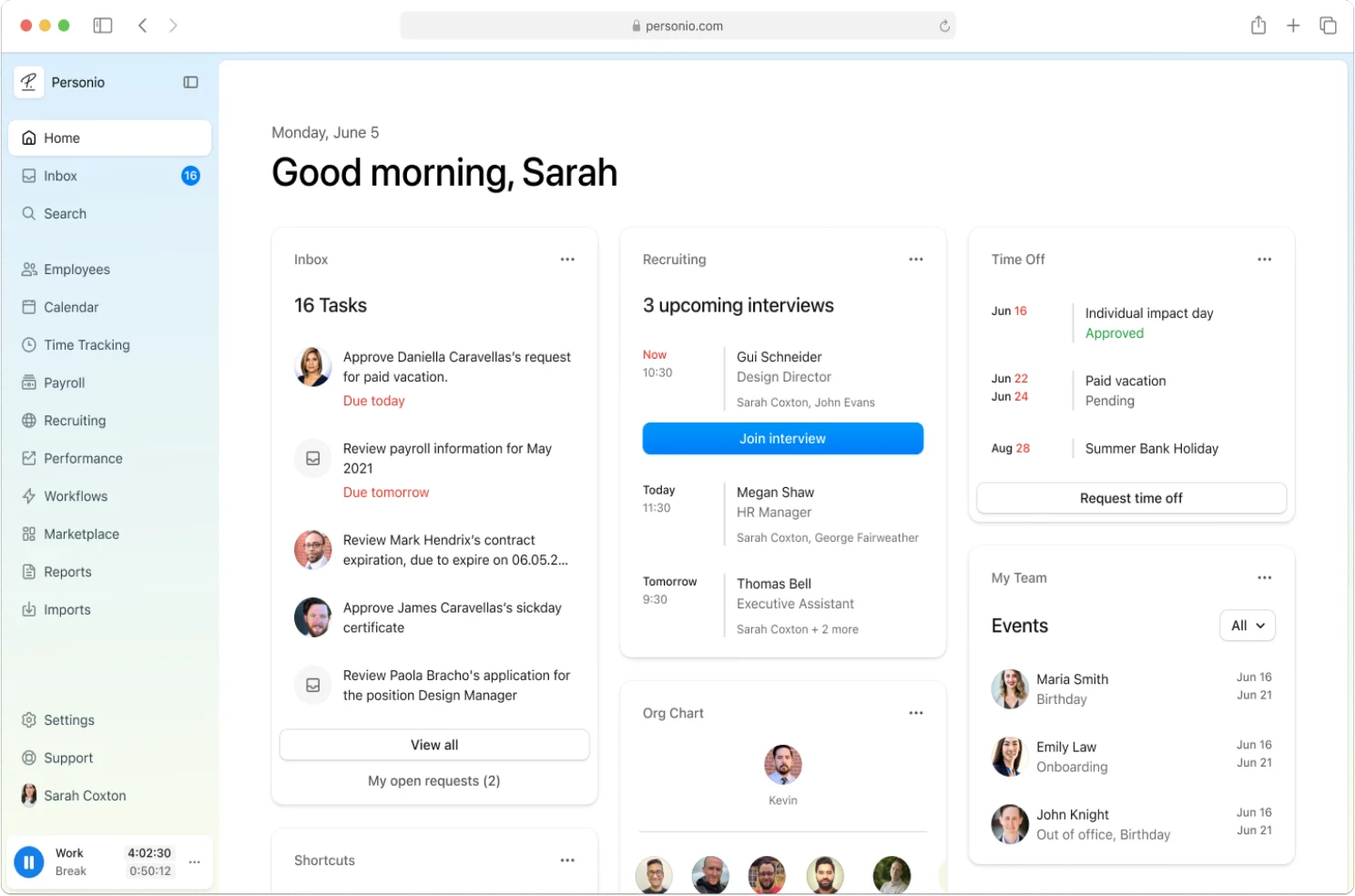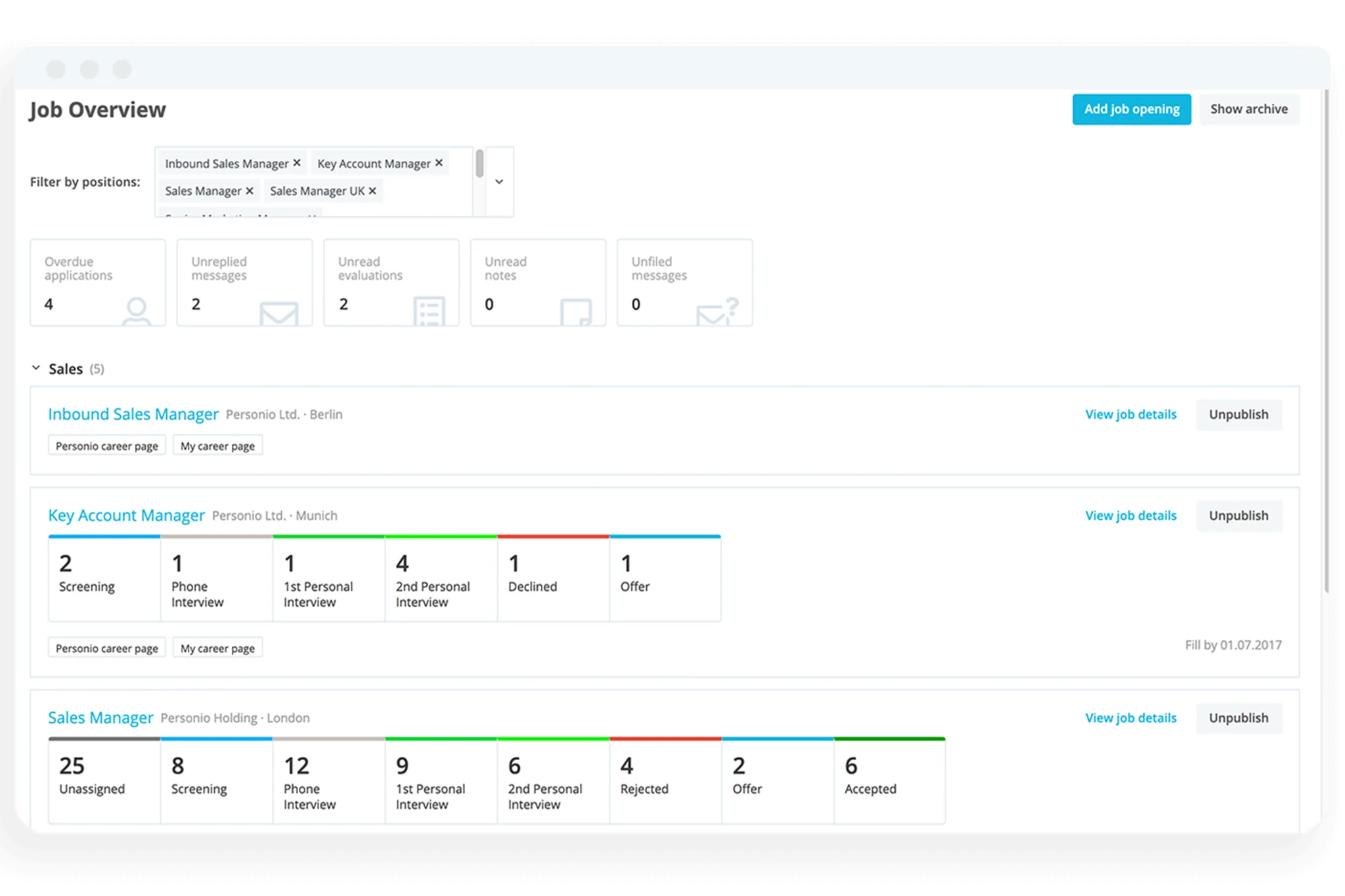Recruitment Process: 7 Crucial Steps and Tips for Hiring the Best

A refined recruitment process can make or break your organisation. After all, companies compete fiercely to attract quality candidates. But, if your processes are lacking, you may be pushing great talent away rather than drawing them in. We explain how in this article.
Key facts
The recruitment process is a company’s means to find and select suitable candidates from the labour market.
There are several stages to recruitment that work as templates for a business to develop techniques that work for its operational needs.
A well-planned and streamlined recruitment process creates a positive candidate experience that can make prospects favour your brand even if they aren’t selected for the role.
Contents
- 1What is recruitment?
- 2What Is the Recruitment Process?
- 3Types of Recruiting
- 4What are the seven stages of the recruitment process?
- 5What is an example of a positive recruiting process?
- 6Recruitment tools and channels: An overview
- 7Tips for effective recruitment
- 8What does the future of recruitment look like?
- 9Recruit only the best for your organisation
What is recruitment?
Recruitment is the entire process behind sourcing, attracting, shortlisting, interviewing, signing, hiring, and onboarding new employees to your organisation. It’s the entire process governing how talent finds your brand, gets to know it through candidate experience and comes aboard as an employee (and all the tools involved in the process, too).
Best Practice: When it comes to recruiting, you absolutely need to have a varied approach to find success.
Recruiting software can play a key role here. It’s why companies invest so heavily in recruitment and HR software, to help optimise their processes in order to get better at sourcing and hiring the best talent.
What Is the Recruitment Process?
The recruitment process is your company’s system for finding and selecting the most suitable candidates for open positions. Typically, the process starts with creating an accurate job description and lasts until a new hire is officially recruited.
Types of Recruiting
Every company has its ideal recruitment process; what works for one might not work for another. As a result, there are several types of recruiting methods that you can use as a foundation to develop your process.
Direct advertisement is when you advertise open positions through online job boards, career sites and social media to find many potential candidates at once. This essential recruitment method can give broad exposure to your employer brand but attracts unqualified people as well.
Recruitment agencies manage the recruitment process and candidate selection on your behalf, freeing up time within the company for more critical tasks. They’re a good option for filling difficult or complex positions when you don’t have the necessary HR resources. However, recruitment agency services can be fairly expensive, and you won’t have control over the recruiting process.
Internships can be seen as a ‘pre-hiring’ phase of sorts. While soon-to-be graduates earn college credit and experience, you get to know them as colleagues and if they’d fit your company culture. It’s a good way to identify talent early and get them to work for your company.
Recruitment events, also known as job fairs, career expos and career fairs, are events companies hold to help them screen several potential candidates simultaneously. This recruitment method saves time and money while allowing applicants to learn more about your organisation and decide if they want to work with you.
Employee referral programmes allow your workforce to recommend family or friends for a vacant position within your organisation. It’s a cost-effective method of screening candidates that tends to bring in people who already understand how your company works.
Talent Pool Databases refer to the pool of candidates that weren’t hired for an open position but had impressive CVss nonetheless. Looking through retained candidates can save time in your future recruitment process.
What are the seven stages of the recruitment process?
Stage | Description |
|---|---|
Identify your needs | Analyse vacancies & pinpoint the skills & experience required for success. |
Craft a job description | Write a compelling description to attract qualified candidates. |
Start your search | Utilise various methods to find top talent internally and externally. |
Screen and shortlist | Prioritise applications based on qualifications and conduct initial interviews. |
Interview and assess | Assess shortlisted candidates through in-depth interviews and potentially skill tests. |
Make an offer | Present a competitive offer to your top pick and negotiate terms. |
Onboard and introduce | Welcome the new hire, provide necessary information, and integrate them into the team. |
We can take the recruitment and selection process and break it down into seven meaningful steps. You can use these stages as a good foundation for developing your ideal recruitment procedures.
1. Identify vacancies and hiring needs
Filling your open positions with the perfect talent starts with understanding exactly what you need. Don't just rely on the job description - talk to the hiring manager to get the real scoop on day-to-day responsibilities, jobs to be done and future plans for the role.
Pinpoint the must-have skills and experience for success, both technical and soft. Consider the team's existing strengths and any knowledge gaps the new hire can fill. Don't forget cultural fit - finding someone who gels with your team is key for long-term success.
Pro Tip: Craft interview questions that target specific skills and behaviours to see if a candidate's past actions predict future wins for your company.
2. Create a job description
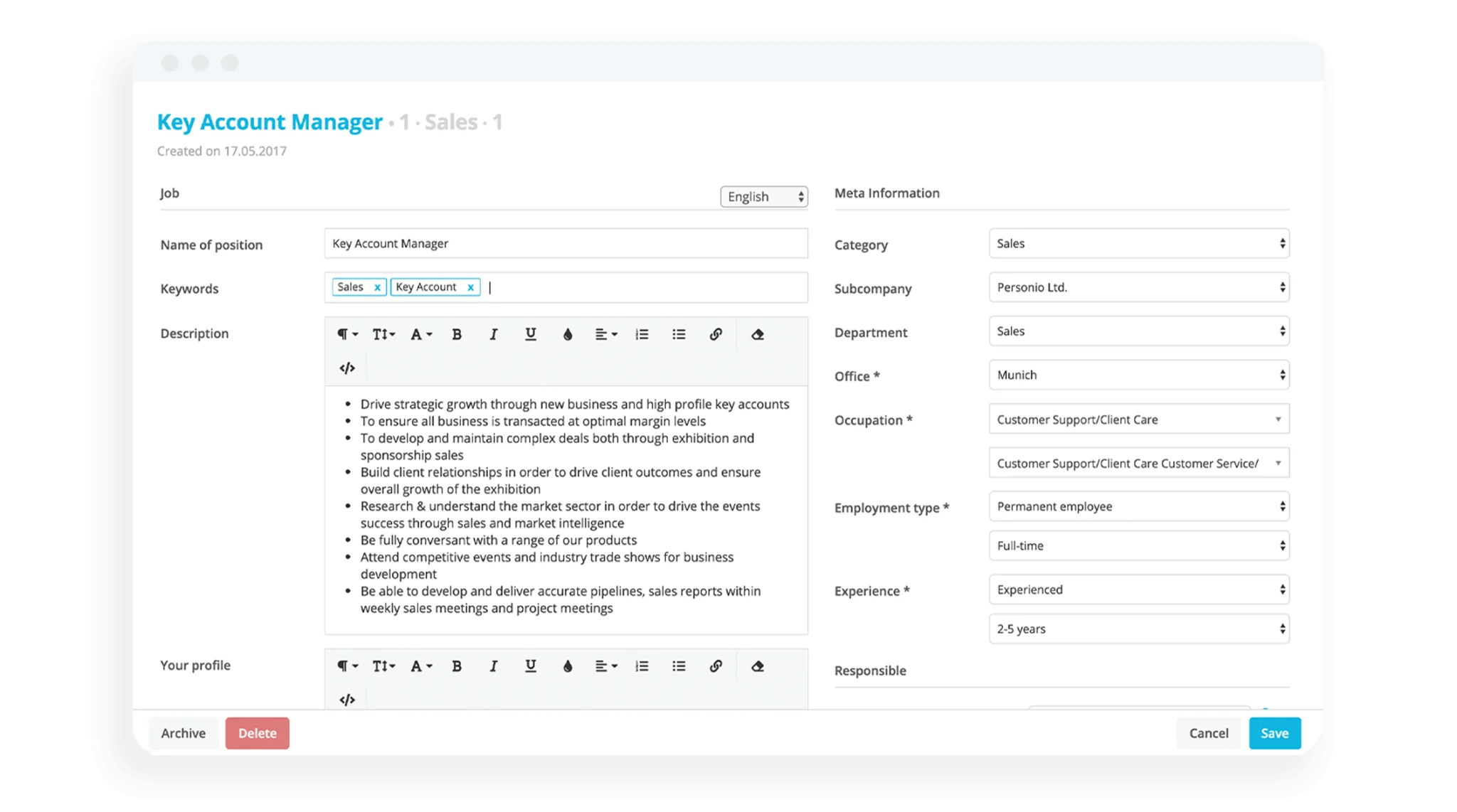
Having a clear picture of the ideal candidate empowers you to write a job description that speaks their language. This acts as a magnet, attracting qualified individuals who are a good fit for the role and your company culture.
Here's the key: focus on the "what" and the "why." Clearly outline the responsibilities and highlight the impact this role has on the team and company goals.
Pro Tip: Use strong action verbs and avoid overly technical jargon. This ensures your description is clear, concise, and easily understood by a wider range of qualified candidates.
3. Begin your talent search
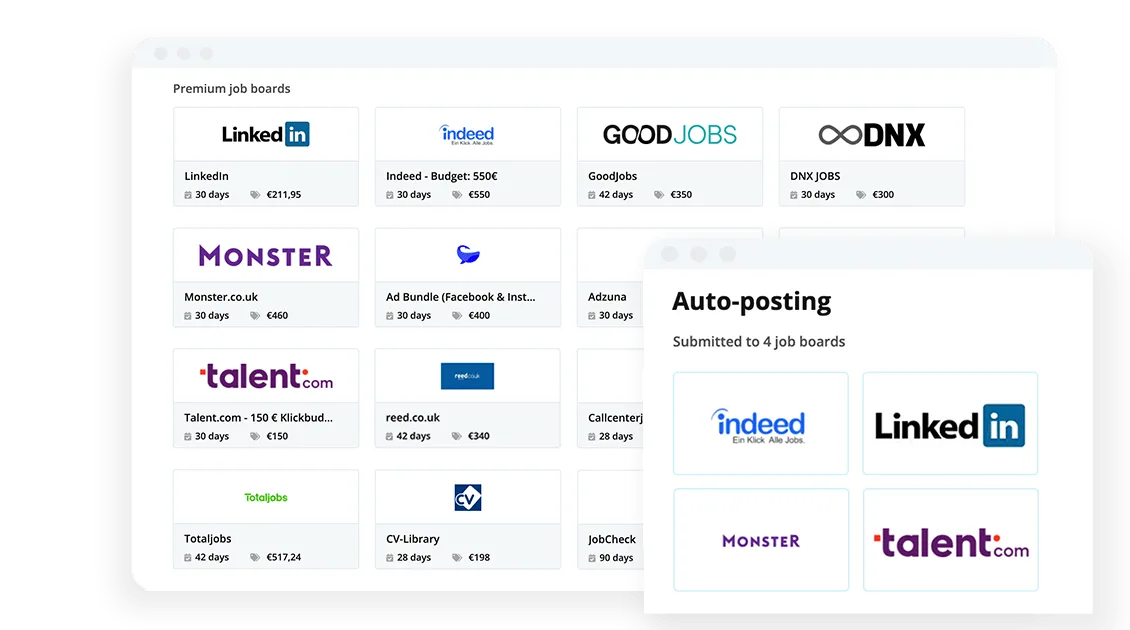
Once your compelling job description is ready, it's time to go fishing for top talent! There are two main ways to find potential hires: internally, through your employee network, and externally, leveraging the wider job market.
Look Within: Employee referrals are a goldmine. Happy employees often know great people! Offer incentives for referrals and fully leverage your team's network.
Look Beyond: Don't limit yourself! Utilise online job boards, professional networking sites like LinkedIn, and industry-specific resources to reach a broader pool of qualified candidates. Consider attending career fairs or partnering with recruitment agencies for specialised roles.
4. Screen and shortlist candidates
Sifting through applications can feel overwhelming, but a strategic approach streamlines the process. Here's how to move from a stack of resumes to a shortlist of top contenders:
Pre-screening magic: Utilise your job description as a filter. Prioritise candidates whose skills and experience directly align with the "must-haves" you identified. Online screening tools can automate this initial step, saving you valuable time.
Quality over quantity: Focus on in-depth reviews of the most promising applications. Look for strong communication skills in cover letters and resumes, along with specific achievements that demonstrate their capabilities.
Look beyond the resume: Consider phone screenings to assess enthusiasm, communication style, and basic qualifications. This can help you shortlist candidates who are a good cultural fit and genuinely interested in the opportunity.
5. Interview and assess candidates
Your shortlisted candidates have impressed on paper, now it's time to see if they shine in person (or virtually!). Interviews are a two-way street. While you assess their skills and experience, they're also evaluating your company culture and the role itself.
Have a structured approach: Develop a standard interview format with a mix of behavioural and situational questions tailored to the specific role. This ensures a fair and objective evaluation of each candidate.
Dive deeper: Use the interview to delve deeper with a candidate. Ask questions that uncover a candidate's problem-solving approach, communication style, and how their values align with your company's.
Don't simply tell: Don't just talk about the role - give candidates a glimpse into the day-to-day experience. Consider including a "shadowing" session where they can observe current team members to see if it's a good fit for them too.
6. Lock down the successful candidate

Congratulations! You've identified a candidate who stands out from the crowd. Now it's time to craft a compelling job offer that secures their talent for your team.
Be prepared to move quickly: The best candidates often have options. Respond promptly and present a competitive offer that includes salary, benefits, and start date.
Transparency is key: Clearly outline the details of the position, including responsibilities, compensation package, and career development opportunities. This sets expectations and fosters a strong working relationship from the outset.
Plan B is essential: While your top choice is ideal, have a backup plan or silver-medalist candidate in place. If they decline, be prepared to revisit your shortlist entirely or resume your search efforts efficiently.
7. Go from offer to onboarding
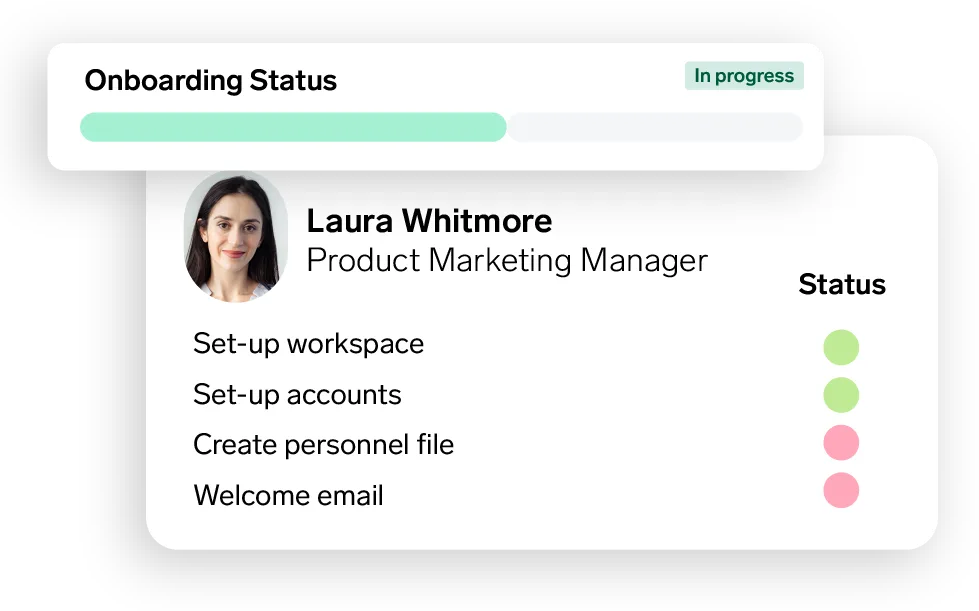
The magic doesn't stop after the offer is accepted! Onboarding is where you transform a new hire into a thriving team member.
Hit the ground running: Have a clear onboarding plan in place to provide all the necessary paperwork, benefits information and IT setup. This ensures a smooth first day and reduces confusion.
Team spirit: Introduce your new team member to their colleagues. Facilitate introductions and team-building activities to foster connections and a sense of belonging.
Setting expectations: Clearly outline their role and responsibilities. Provide a roadmap for their initial weeks and months, including training opportunities and mentorship programs. This equips them for success and keeps them engaged from the start.
What is an example of a positive recruiting process?
A great recruiting process relies on the concept of candidate experience. In the hunt for top talent, your ideal candidate always needs to be at the centre of your universe. This means that your entire process, even the way you speak to candidates or respond to their questions, needs to be streamlined (and, ideally, automated as a an HR workflow).
But, you can only determine if a candidate is right for your role if you have candidates in the first place. So, the trick becomes sourcing, attracting and shortlisting the most qualified candidates.
Here’s how we’d break it down:
Examples of internal recruiting initiatives
Sometimes a solution is closer than you think, here are some options to consider:
Advertising positions internally - Focus on colleagues already within your company, which can reduce your time to hire while boosting internal mobility in your organisation.
Employee transfers - Transferring employees can be a way of managing your workforce planning needs, but you need to make sure the employee is actively involved.
Examples of external recruiting initiative
External recruiting is designed to address people outside your organisation. Here are some ways to consider doing it:
Unsolicited applications - Candidates apply for a position that is yet to exist.
Talent pools - An in-house database of existing and potential candidates.
Employer branding - Make yourself attractive to active and passive talent.
Job adverts - A classic way to reach potential applicants.
Social media recruiting - Leveraging new channels to find candidates
Recruiting events - Career fairs, internal events, campus marketing, etc.
Recruitment tools and channels: An overview
Channel | Defined |
|---|---|
Career Website | According to one study, almost 40% of all jobs are filled through the career website. Make sure it is clear and easy to follow so that potential applicants can quickly find what is most relevant to them. |
Job Portals | There are numerous job portals out there. Which platform you choose for your recruitment depends on the target group. Typically, using a combination of platforms is usually the best option. |
Social Media | Social media also has the advantage of attracting the attention of potential candidates who are not actively looking for work. Whether that is through advertisements or a personal approach from a recruiter, headhunter, specialist, or a contact. |
Mobile Recruiting | According to Monster, 90% of companies said that mobile recruiting (recruiting via smartphones, tablets etc.) is becoming increasingly important. So, a mobile-optimized career page is mandatory in this case. |
Career Fairs | Show this sought-after new generation of talent what you have to offer as an employer and why exactly they should start their careers with you. |
Employee Referrals | When employees suggest open positions to their contacts or acquaintances, this has two advantages: It is more cost-effective and it ties potential candidates more closely to the company (from the very beginning). |
Tips for effective recruitment
Ready to bring in the best talent? Try these four tips.
Design a positive candidate experience. Ensuring that the recruitment process goes as smoothly as possible builds a positive view of the company in the candidate’s mind. Even if they’re not selected for the position, their favourable experience could lead them to encourage others to apply.
Have a strong offboarding process. A streamlined offboarding process ensures that departing employees have a positive opinion of the company and can drive them to encourage others to apply. This can help drive referrals and boomerang employees.
Allow flexible working arrangements. Flexibility in their working arrangements is becoming an increasingly important benefit to candidates. Promoting that your company supports a work-from-home model can attract more high-quality candidates.
Embrace diversity. A workplace composed of people from diverse backgrounds is another value many candidates seek from their employers. Embracing it can vastly increase the pool of people you can pull talent from.
What does the future of recruitment look like?
A competitive labour market also calls for a strategic rethink on the part of recruiters, because you need to (re)fill positions even more quickly. Recruiters should try and keep the following in mind:
1. Get up close and personal
Recruiters should – quite literally – be more visible. That means more personal and individual communication with candidates because candidate expectations have changed. Communication has to take place on an equal footing rather than coming down from on high, as was the case for so long.
2. Build a network and leverage it
Making things more personal also means building up a broad network and staying in touch with your contacts – and potential candidates. Social media is perfect for this. If recruiters are able to establish an (emotional) connection with their followers, this will be a great help during the recruiting process.
3. Make your data work harder
Even the best recruiting processes require data and recruiting software. In addition to evaluating which components, phrases (for example using A/B testing), and job advertisement channels are most successful, aspects such as time-to-hire and the website visitor-to-applicants rate should be analysed regularly.
That is why one of the best recruiting tips is having the infrastructure in place to facilitate the delivery of data. That way, you have fresh insights, at a glance, and only at the click of a button. Your data works harder for you, and you spend less time putting it together.
4. Sensitive selection
The trend is moving away from quantity toward quality. It is not the number of applicants that matters, but how good a fit they are for the job and the company, and how long they stay. It should not make any difference to recruiters if developers make spelling mistakes in their applications. What matters are their abilities.
Marketing managers, on the other hand, should be able to sell themselves effectively and should not submit a run-of-the-mill application. So, it is even more important for recruiters to understand their target group.
5. Focus on cultural fit
What is recruitment? At its heart, what matters is a shared understanding of topics such as how to deal with clients, work ethic, and feedback (just to name a few). So, if you make sure before the hiring that the applicant and company are a good cultural fit, it will pay dividends in terms of employee loyalty and company success.
Recruit only the best for your organisation
The most effective recruiting processes are often long and arduous, but finding the best possible people to fill empty positions within your company is worth the effort.
Creating a positive candidate experience throughout the recruitment process can draw prospective employees to your organisation even when they’ve received multiple offers.
Personio can help your organisation build a streamlined, effective and efficient recruitment process with our applicant tracking software. Click here to see how it works.
